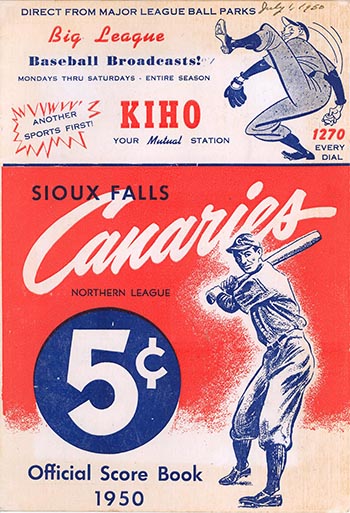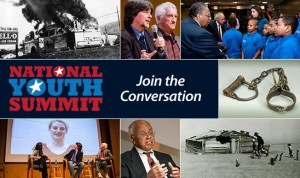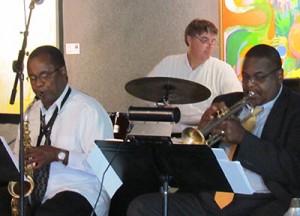adventures with affiliations!
Special thanks for this guest post to Rachel Brummond. Rachel interned with the Affiliations office this spring and helped us build our e-marketing for the Smithsonian Affiliations Membership Program. Rachel is wrapping up her Junior year at Luther College in Iowa with a Major in Management/Political Science. Many, many thanks for everything Rachel!
My Dream: Living in DC with the Smithsonian in one hand and the Capital in the other!
I have dreamt of being a part of the Smithsonian Institution since I was a little girl on her first vacation to Washington, D.C. After that, when others wanted to be princesses, ballerinas, firefighters and policemen, I wanted to grow up to be THE curator of THE Smithsonian Museum. Little did I know that the Smithsonian is actually a network of 19 museums and galleries, the National Zoo, and nine research facilities, each with their own curators, directors, membership staff, and programs. I also had no idea that the Smithsonian is a living organism that includes a nationwide partnership program that consists of more than 180 Affiliates in more than 40 states, Puerto Rico and Panama. That first trip marked the beginning of a remarkable journey to where I am today–an intern learning from the same organization that I ooh’d and ahh’d about as a child.
This spring I had the incredible opportunity to join the D.C. intern-pack as a membership communications intern at Smithsonian Affiliations, leading to some Seriously Amazing opportunities through the Smithsonian and specifically with the Affiliations office. I have visited countless museums, had private tours, attended share-fairs, and been thoroughly immersed in the culture and collaboration that the Smithsonian embodies. The Affiliations office has brought me a much better understanding of the nationwide partnerships that we facilitate, and of course has led to an extensive growth of my photo collection that documents my life in the nation’s capital!
Two of my favorite museums: The National Portrait Gallery and Smithsonian American Art Museum!
Being an intern for the Smithsonian has been such a learning experience! Smithsonian curators and researchers have important and serious work to do, so it’s always fun to see a lighter side of their jobs from time to time. For instance, every April Fool’s day the National Museum of American History hosts a “conference on stuff” with a lighthearted theme for all Smithsonian staff and visitors. Harold Closter, director of our very own Affiliations office, emceed this year’s salt-themed event and had some very “punny” quips for the audience. It was so fun to see the Smithsonian staff operating in an off-the-cuff, fun, but still well-researched way! I was also encouraged to explore the Smithsonian in-between projects, so I took “museum Fridays” and went to discover as many Smithsonian museums as possible while I was here. I saw 12 of the 15 museums that are currently open and in D.C.–a considerable success that appeals to the learning buff in me!
One of the most memorable experiences was the arrival of The Nation’s T.Rex. To me, this loan really shows the amazing partnerships that the Smithsonian creates with Affiliates across the country. The Wankel T.rex was discovered in Montana and lived at the Museum of the Rockies, a fabulous Smithsonian Affiliate, for the past two decades. It was so fun to participate in the social media plan by crafting tweets to talk about the dino’s arrival and about its 50-year vacation to the National Museum of Natural History. What a fantastic way to outline the network and partnership program that the Affiliations office facilitates. I am so proud to have been a part of an Institution so committed to the increase and diffusion of knowledge–even if their audience doesn’t always live in the DC area.
That’s what the Affiliations office is all about, bringing the Smithsonian to people around the country in order to create access to the incredible collection of knowledge, artifacts, and amazing culture that embodies the Institution. It’s been an adventure to say the least, and I am so grateful that the Affiliations office was willing to have me as a part of their team!
Here it is! The Wankel T.Rex was one of my favorite projects. Special shout out to Museum of the Rockies!
























 Ok, so we can’t actually send 101 artifacts on the road all the time, but we can send Smithsonian Under Secretary for Art, History, and Culture Richard Kurin! Aided by a team of top Smithsonian curators and scholars, Richard’s new book The Smithsonian’s History of America in 101 Objects, is a literary exhibition of objects from across the Smithsonian that together offer a marvelous new perspective on the history of the United States.
Ok, so we can’t actually send 101 artifacts on the road all the time, but we can send Smithsonian Under Secretary for Art, History, and Culture Richard Kurin! Aided by a team of top Smithsonian curators and scholars, Richard’s new book The Smithsonian’s History of America in 101 Objects, is a literary exhibition of objects from across the Smithsonian that together offer a marvelous new perspective on the history of the United States.

